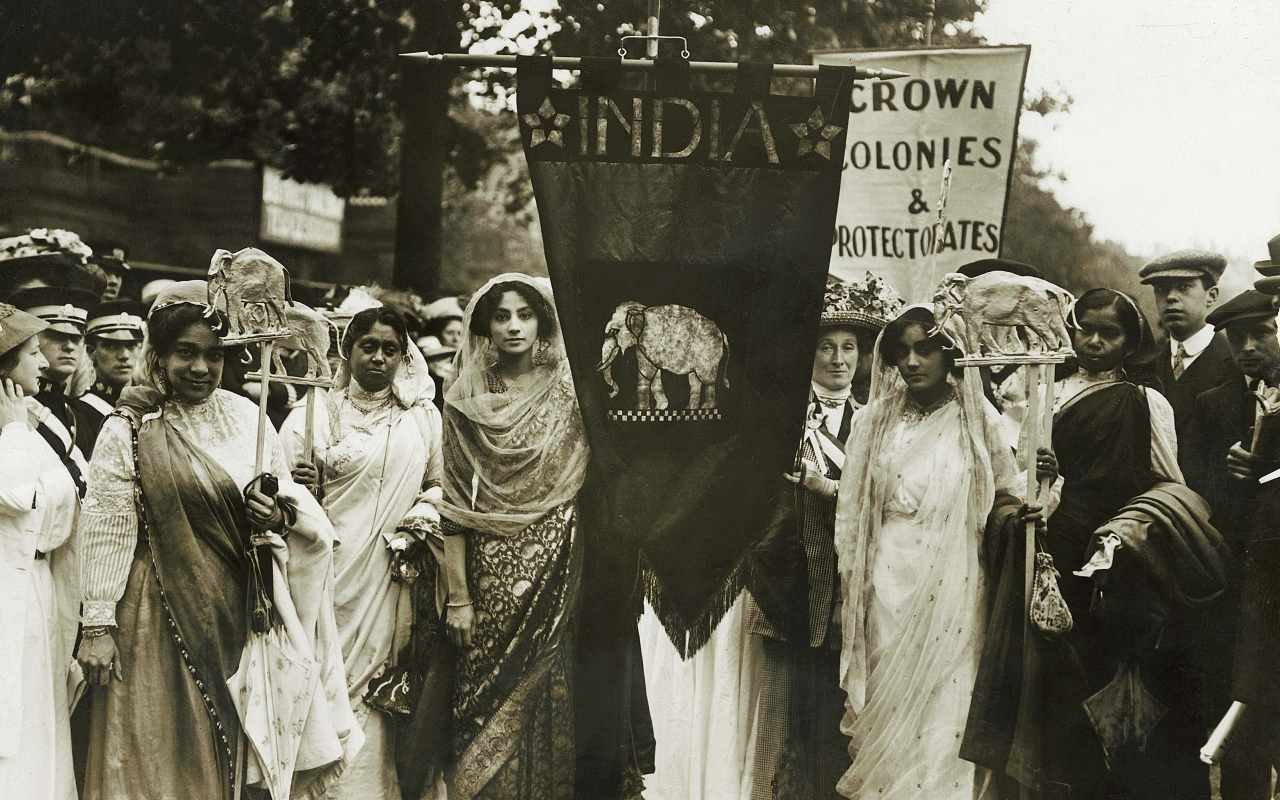
You’ve probably heard of the Suffragettes, who fought for women’s rights, but did you know that an Indian princess was one of the leading campaigners in England?
VOTES FOR WOMEN!
This was the cry of the suffragettes in the early 1900s, but it wasn’t just a vote that they wanted. They also wanted to better the lives of women around the world.
At the turn of the 20th century, British colonialism was at its height. British families travelled around the world, to India, Africa, West Indies and other outposts of the British Empire. The local inhabitants were often not treated well – they were forced to work for low pay (or none at all!) and in bad conditions.
When the families returned to Britain, they took their servants with them. Generally they were only employed for the few weeks of travel, and quite often they were dismissed when they arrived in England. They couldn’t just jump on a ship to go back to their homeland – they didn’t have enough money to do that. So they were stuck without family or friends, in a country that was very foreign to them, without any way of getting home.
The Indian word for nanny is Ayah, and many of these young women went to the Ayah’s Home, which was set up to help those waiting to go home, and to find them work until they could do so.
The voices of the suffragettes were getting louder. They talking not only of their desire to vote, but of their concern for their Indian sisters. At this time, Asian women were often viewed as being passive and helpless, who would be ‘saved’ by British women. But that image was to change!

Sophia Duleep Singh was born in 1879, the daughter of Maharaja Duleep Singh, the last ruler of the Sikh Empire in Punjab, and Bamba Müller, of German and Ethiopian descent. Sophia and her siblings were brought up in Suffolk, within the English aristocracy – her Godmother was Queen Victoria.
It was Queen Victoria who granted Sophia a ‘grace and favour‘ appartment in Faraday House, Hampton Court. Sophia became an active campaigner of the rights of women, and could often be seen on the street corner outside Hampton Court palace, selling copies of the Suffragette Magazine.
One way in which the women protested, was to refuse to pay taxes. Sophia was involved in the Women’s Tax Resistance League, and was fined £3 by the courts for refusing to pay her taxes due on her five dogs, carriage and a man servant.
In 1911 the courts seized her diamond ring and auctioned it off. Friends of Sophia attended the auction, and a fellow Suffragette called Mrs Topling bought the ring, and returned it to its rightful owner! Two years later, a pearl necklace and a gold bangle studded with pearls and diamonds were seized, and auctioned at Twickenham Town hall. Sophia declared,
“When the women of England are enfranchised I shall pay my taxes willingly. If I am not a person for the purposes of representation, why should I be a fit person for taxation?”
Again, a member of the WTRL stepped in to buy back Sophia’s jewellery, and these incidents helped generate interest and support for the women’s movement.
Sophia Duleep Singh marched with Emmeline Pankhurst, Elisabeth Garrett Anderson and Dorina Neligan at the head of the Black Friday deputation to Parliament in 1910, a march that ended with police violence and the death of two suffragettes.
In 1915 Sophia Duleep Singh was part of the 10,000-strong women’s war work procession led by Emmeline Pankhurst. Sophia joined the Suffragette Fellowship, and remained a member until she died in August 1948. She devoted her life to the rights of women.
With thanks to Shahida Rahman and The Asian World for drawing our attention to this story!
If you want to find out more about Sophia Duleep Singh, this book by Anita Anand is due out in January 2015.




Cool,but there should be some pictures of the princess, or something.
We’d love to include more photos, but often there are issues with copyright, Mary. We only share photos that are available with no restrictions.